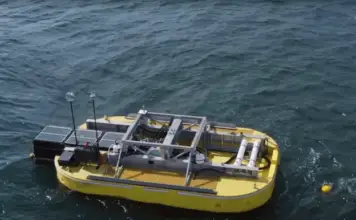At first glance it looks like an ordinary solar panel, but it is actually a magical panel that can produce hydrogen.
The hydrogen panel developed by the Belgian team can produce 250 liters (66 gallons) of hydrogen per day with an efficiency of 15% and is expected to be commercialized in 2026.
The hydrogen panel developed by the team of the Catholic University of Leuven in Belgium can decompose water vapor in the air into hydrogen through sunlight.
The project is currently underway under the Solhyd project, in the transition phase from research to spin-off.
It can produce 250 liters of hydrogen per day with a 15% efficiency and is expected to be commercialized in 2026.
According to the introduction, the hydrogen panel is similar to the solar panel, but the bottom is not a wire but a pipeline. After the solar panel on the top generates electricity.
The pipeline below extracts water molecules from the air, splitting the water molecules to eventually produce hydrogen, which the team claims can only be used effectively in places that are too dry.
Jan Rongé, researcher at KU Leuven, said that Solhyd hydrogen panels are compatible with most commercial solar panels, and solar panels can be installed directly on the hydrogen system.
A Heating and Power Solution for Homes
In this way, the team can also benefit from the solar energy industry, which continues to reduce costs.
The team believes that hydrogen panels are ideal for small-scale, modular and decentralized production.
As long as 20 panels are installed, the house can be provided with good heat and electricity in winter.
When installed with solar collectors and solar panels, hydrogen panels can heat homes and provide electricity year-round.
However, considering safety and cost, the hydrogen panel does not have the function of storing hydrogen, and it has always been operated at low pressure. The hydrogen panel collects the hydrogen climate in a centralized manner.
Hydrogen will only be compressed when it is needed, Rongé said, and in the short term it will be aimed at medium-sized applications such as backup power, logistics, heavy-duty transportation, and later on from large-scale ammonia production to small off-grid systems.
In the future, the price curve of hydrogen panels will be similar to that of solar panels. In order to avoid excessively high prices, cheaper materials are also used.
Many prototypes have also been tested since the project started in 2011, and the Solhyd project has now stepped out of the lab in September,
The factory in Leuven, Belgium has a manufacturing space of 350 square meters. At first, dozens of hydrogen panels were manufactured.
5,000 panels are expected to be manufactured annually in 2026, the same year they will be commercially available, and prices will be close to those of today’s solar panels.




